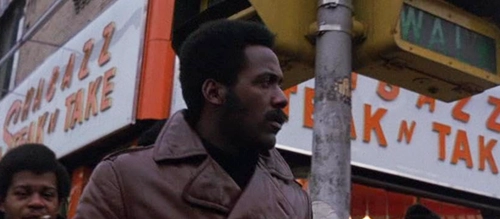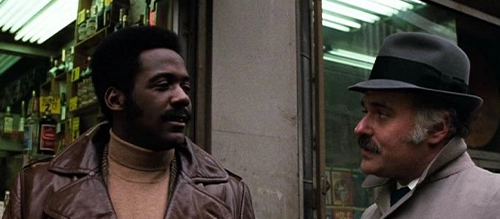‘Shaft’ Unveiled Blaxploitation’s Cultural Revolution

In 1971, Gordon Parks’ film Shaft was released as a desperate attempt by MGM to save the studio. The film was not expected to do well, operating on a $500,000 budget on a selective release schedule starting Independence Day weekend. Surprisingly, the film was a sleeper hit grossing over $12million at the box office, becoming a cultural phenomenon, and heralding what would later be known as the Age of Blaxploitation films. Blaxploitation films were mid-budget movies tailored to Black audiences between the 1970s and 1980s. They often starred up-and-coming Black actors and boasted iconic soundtracks.
Shaft defined the genre with its infusion of style, swagger, and social commentary. The film drew inspiration from James Bond’s daring deeds and the true grit of crime noir. The titular character John Shaft, brought to life by the young and charismatic Richard Roundtree, personifies the archetype of the no-nonsense wisecracking private detective and ladies’ man who “Takes no shit”. In the film, Shaft is tasked with unraveling a kidnapping plot while relying on the likes of Black nationalist militants and white police detectives to solve the case. Amidst the chaos, Shaft takes the time to sleep with multiple women, and flirt with even more. These dalliances serve both as narrative devices and as reflections of the ideal masculine identity. Shaft’s portrayal as a strong, confident, and assertive man reflects the “Strong Black Man” archetype, though it can be said that he also embodies traits of the negative “Buck” stereotype – a strong, violent, hypersexual Black man.
Fortunately, Shaft seems to generally defy the “Buck” stereotype, though there is an overlap of traits. Shaft is primarily viewed through a lens of heroic justification. He is violent, but he is violent with criminals to save the life of a teenage girl. He is hypersexual, but his sexuality reinforces the idea of male virility, similar to Bond and his female conquests. Young men are often thought of as sexual creatures and are judged by their sexual prowess. Sleeping with multiple women proves Shaft’s virility, and he is idolized as the ideal man. Shaft defies negative stereotypes of Black masculinity, displaying kindness and acceptance as he banters with an openly gay bartender. He warmly approaches the poor and homeless to ask questions, as opposed to immediately roughing up the militants and mob members.

A criticism levied at the character of Shaft is that he is a product of white imagination, given the involvement of white writers. Throughout the film, Shaft’s interactions with Black characters, particularly the Black nationalist militants, are fraught with tension. He berates the militants and their movement and vehemently despises the mobster who tasked him with the kidnapping. Though Shaft lives in a predominantly Black area, his comments toward other Black men are primarily rude, and his comments toward Black women border on flirtatious and sexual. In comparison, Shaft frequently communicates with the white detectives that he is tangentially related to through work. Though his tone is harsh, he adopts a friendly and familiar manner of speaking, and relies on white Lieutenant Androzzi as a backup partner and views him as an equal.
The film’s treatment of women reflects the 70s’ evolving attitudes towards gender and sexuality. Women are presented as mere damsels, or as sexual conquests. Though Shaft’s Black girlfriend adds depth to his character, as they seem to have a home and life together, it is his brief fling with a white woman that challenges the racial norms of the era. Their encounter also subverts the “Buck” stereotype of a Black man pursuing a White woman, and frames her as the oversexed initiator. Shaft does not seek or pursue her, he only engages because she is already flirting with him, and after their dalliance he quite rudely rebuffs her and ushers her out making no notions of contacting her again. This negates white fears of Black men lusting after white women, and perpetuates a quite misogynistic narrative of a White woman pursuing a Black man. This was an innovative idea for the 1970s as few depictions of interracial couplings existed, with none including a white woman lusting after a Black man.
Shaft is one of the first examples of a Blaxploitation film that would come to define that era of early 1970s cinema. The film’s appeal lies in its depiction of Black men and masculinity, outlining what a Black man could be: powerful, strong, and confident in an era where Black people were treated as second-class citizens. Despite its many flaws and contentious themes, Shaft has remained relevant as a cult classic and a touchstone in the cultural zeitgeist with its many spinoffs and inspirations. The film remains a testament to the power of cinema, sparking discourse, debate, and challenging prevailing norms. It presents itself as a good time and simple movie watch, while also inviting audiences to dissect their views of masculinity, race, and crime. All while listening to some groovy tunes.
Written by Juahl Ganaway
You can support Juahl Ganaway via Instagram @p.d.juahl.

